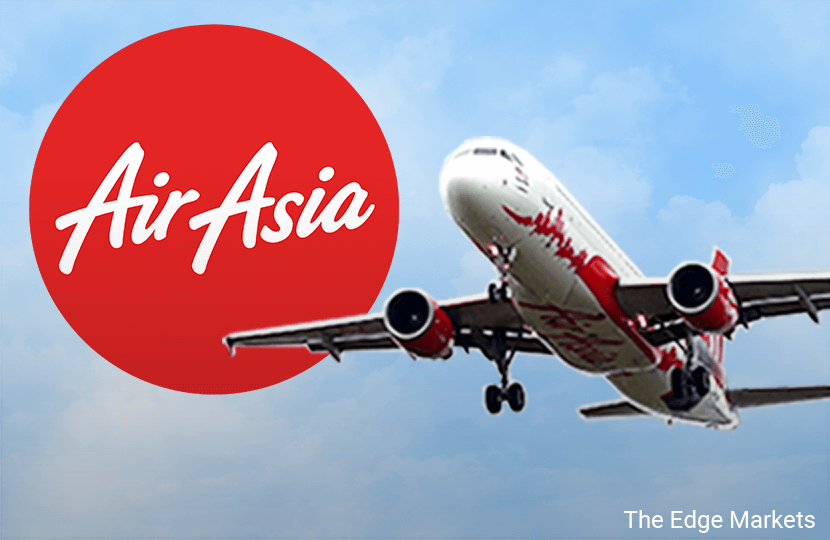
This article first appeared in The Edge Malaysia Weekly, on December 7 - 13, 2015.
ARECENTLY, AirAsia group had to quash talk that a pilots’ revolt was the cause of several flight cancellations last week.Yet, few things about AirAsia and AirAsia X (AAX) would trouble investors more than the group’s latest quarterly financial results.
AirAsia’s revenue rose 15% to RM1.5 billion in the third quarter ended Sept 30, 2015 (3QFY2015) and 5.3% to RM4.1 billion in the first nine months of FY2015. However, its quarterly net loss of RM405.7 million, pulling down the cumulative nine-month figure to a loss of RM13.4 million. Compared with a profit of RM5.4 million in 3QFY2014, the latest numbers can be hard to stomach.
What pushed the airline’s headline number into the red are the poor results reported by AirAsia’s associates, especially a previously unrecognised loss at Indonesia AirAsia (Indonesia AA) of RM469.3 million after a capital injection.
Other associates are also at fault. Except for AirAsia Thailand (which posted a net profit of THB174 million), the company’s other joint-venture airlines were loss-making. Philippines AirAsia (Philippines AA) and AirAsia India posted a net loss of RM120.9 million and RM41.3 million respectively while AirAsia Japan lost RM15.7 million during the quarter.
AAX is not doing any better. It continued its losing streak for the eight consecutive quarter, reporting a 36% year-on-year increase in net loss to RM288.2 million. The plunge was partly attributed to foreign exchange losses swelling almost fivefold y-o-y to RM241.3 million. For the nine-month period, unrealised foreign exchange loss stood at RM356.7 million.
Revenue in 3QFY2015 grew 13.4% to RM793 million while in the nine-month period, net loss expanded 60% to RM561.8 million.
Shukor Yusof, an analyst with aviation research firm Endau Analytics, dubs the results “poor”, especially given the current climate of low oil prices.
“The results are partly due to weaker market conditions but they also have a lot to do with the structural issues facing the two airlines. AirAsia expanded too fast and was too aggressive in competitive markets like Indonesia. Also, I doubt that AAX’s business model will work,” he tells The Edge.
The optimists argue that the weak quarterly performance of AirAsia (fundamental: 0.20; valuation: 1.20) and AAX is not what seems. For AirAsia, they say the loss in 3QFY2015 was the result of one-off deductions and believe the airline is capable of steering itself back into profitability. In a Nov 27 note, Kenanga Research says after stripping out the one-off items, AirAsia should see a core net profit of RM443.6 million in the nine months ended Sept 30 — a y-o-y expansion of 76% — and RM181.2 million in 3QFY2015 — a y-o-y expansion of 65%.
Also, the low-cost carrier’s yields are up while its costs are down. Yields improved 14% to 12.7 sen/revenue per kilometre y-o-y in 3QFY2015 and 5% to 11.5 sen for the nine months, thanks to higher average fares. Cost per available seat kilometre (CASK), although 3% higher at 13.1 sen in 3QFY2015, was reassuringly 7% lower at 13.8 sen in the first nine months. Load factor improved to 82% in 3QFY2015.
Hong Leong Investment Research analyst Daniel Wong says these figures indicate that AirAsia is still “healthy operationally”. “I think you will see the effect of losses recognised in 3QFY2015 last for the next two quarters, but things are still healthy operationally. I have a ‘buy’ call on the stock based on the strength of the business in Malaysia and possible lower losses in the Indonesian and Filipino arms.”
Wong feels that AirAsia’s plan to reduce capacity and shift Indonesia AA’s focus from domestic to international routes where it can leverage the wide AirAsia network is encouraging. In addition, Philippines AA is improving its efficiency cost by disposing of three old aircrafts. The company expects that both Indonesia AA and Philippines AA to turn around in the final quarter of FY2015.
On AAX (fundamental: 0.20; valuation: 0.30), MIDF Research says its 3QFY2015 loss was within expectations. In a Nov 26 note, the research house writes: “The core net loss of RM47 million in 3QFY2015 was a big improvement over the RM176 million and RM138 million losses recorded in 3QFY2014 and 2QFY2015 respectively. If it were not for the strengthening of the US dollar, which resulted in its 76% US dollar-denominated operating expenses increasing in ringgit terms, AAX would have been back in the black.”
Maybank Research calls the results “constructive”, citing a solid yield recovery trend as the main reason. For the quarter, AAX’s CASK was up 5.4% to 13.8 sen while RASK took a 25.2% leap to 13.7 sen y-o-y. For the nine-month period, CASK rose 31.2% to 9.5 sen and RASK expanded 13% to 12.7 sen y-o-y.
Public Invest Research analyst Nur Farah Syifaa’ Mohammad Fu’ad opines that AAX will be able to sustain yields at levels seen in 3QFY2015 due to reduced competition from Malaysia Airlines and stronger charter flight earnings.
“My forecast is that AAX will return to the black in 2016, thanks to low fuel cost and a sustained upward trend in yields,” she adds.
If the analyst’s forecast comes true, AirAsia group will be seeing clearer skies ahead.
Save by subscribing to us for your print and/or digital copy.
P/S: The Edge is also available on Apple's AppStore and Androids' Google Play.